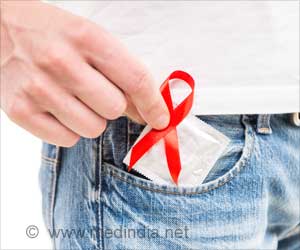Every year April month is observed as Sexually Transmitted Diseases (STD) Awareness Month to raise awareness about STDs, reduce the stigma attached to them.
- Sexually Transmitted Disease (STD) Awareness Month is observed globally in April
- This month especially aims to raise awareness about the sexually transmitted disease (STD) and how they affect peoples’ lives
- In addition, it also ensures that people have the adequate tools, knowledge, and resources to prevent, test, and treat STDs.
Sexually Transmitted Infections Awareness Month
Go to source).This observance also reduces the STD-related stigma, fear, and discrimination; and provides the tools and knowledge required to prevent, test, and treat STDs.
This campaign was started by the Centers for Disease Control and Prevention (CDC) as an effort to slow down the nation’s increasing sexually transmitted infection rate.
Read More..
Know the Facts
False beliefs about STDs — how they’re spread, prevented, and treated are spilled everywhere, and it can be difficult for people to pick the right one. The most important thing is that you have to make sure that all your information, provided for STD prevention and testing, are correct(2✔ ✔Trusted SourceAbout STD Awareness Week
Go to source, 3✔ ✔Trusted Source
Sexually transmitted infections (STIs)
Go to source).
- More than 1 million sexually transmitted infections (STIs) are acquired every day worldwide.
- Young people are the most affected by STDs. In the US, almost half of all new infections were among people aged 15 to 24 years.
- STIs are spread predominantly by sexual contact, including vaginal, anal, and oral sex.
- Some can also be transmitted from mother to child during pregnancy, childbirth, and breastfeeding.
- A person can have an STI without showing symptoms of the disease.
- Common symptoms include vaginal discharge, urethral discharge or burning sensation in men, genital ulcers, and abdominal pain.
- Use a condom to lower the risk of getting an STD.
- Birth control methods do not protect against STDs.
- Abstinence or not having sex is the most reliable way to avoid STDs.
- All STDs, even HIV, are treatable, and some are curable. The sooner you get tested, the sooner you can take action to protect your health and the health of your partner(s).
- STDs have a direct impact on sexual and reproductive health through stigmatization, infertility, cancers, and pregnancy complications and can increase the risk of HIV.
Get Yourself Tested
The theme of this year is “Get Yourself Tested.” For the past two years, the COVID-19 pandemic has halted the routine health screenings and caused a dramatic drop in STD testing. This doesn’t mean that there’s been a drop in STD cases or an increase in protected sex or abstinence(4✔ ✔Trusted SourceSexually Transmitted Disease (STD) Awareness
Go to source).
Knowing your STD status is a crucial step to stopping transmission. If you know you are infected, you can take steps to protect yourself and your partners. Even if you are asymptomatic, or not experiencing any changes in your health, you can unknowingly spread an infection to your partner.
How to Get Tested?
If you are sexually active, getting tested for STDs is a must to do a thing for your health. Have an open and honest conversation with your healthcare provider about your sexual history and STD testing. This will help them understand what STD tests you may need.Here is the list of STD tests everyone should be aware of(5✔ ✔Trusted Source
How Do Sexually Transmitted Infections Affect People with HIV?
Go to source, 6✔ ✔Trusted Source
How to Get Yourself Tested
Go to source)
- All adults and adolescents from 13 to 64 years should be tested at least once for HIV.
- All sexually active women younger than 25 years or older with risk factors such as new or multiple sex partners or a sex partner who has an STD should be tested for gonorrhea and chlamydia every year.
- Pregnant women should be tested for syphilis, HIV, hepatitis B, and hepatitis C.
- All sexually active gay, bisexual, and other men who have sex with men should be tested at least once a year for syphilis, chlamydia, and gonorrhea. Those who have multiple or anonymous partners should be tested more frequently (e.g., every 3 to 6 months).
- People who have oral or anal sex should talk with their healthcare provider about the throat and rectal testing options.
End the Stigma
STDs are just infections and they have no moral or immoral component. They infect people regardless of race, gender, religion, or sexual orientation, and equip yourself with education and awareness that can help destigmatize and encourage testing.References:
- Sexually Transmitted Infections Awareness Month - (https://www.ashasexualhealth.org/sexually-transmitted-infections-awareness-month/#:~:text=Each%20April%2C%20ASHA%20recognizes
%20STD%20Awareness%20Month.) - About STD Awareness Week - (https://www.cdc.gov/std/saw/about.htm)
- Sexually transmitted infections (STIs) - (https://www.who.int/news-room/fact-sheets/detail/sexually-transmitted-infections-(stis))
- Sexually Transmitted Disease (STD) Awareness - (https://www.dhhs.nh.gov/dphs/bchs/std/std-awareness-month.htm)
- How Do Sexually Transmitted Infections Affect People with HIV? - (https://www.hiv.gov/hiv-basics/staying-in-hiv-care/other-related-health-issues/sexually-transmitted-diseases)
- How to Get Yourself Tested - (https://www.cdc.gov/std/saw/gyt/howtoGYT.htm)
Source-Medindia











